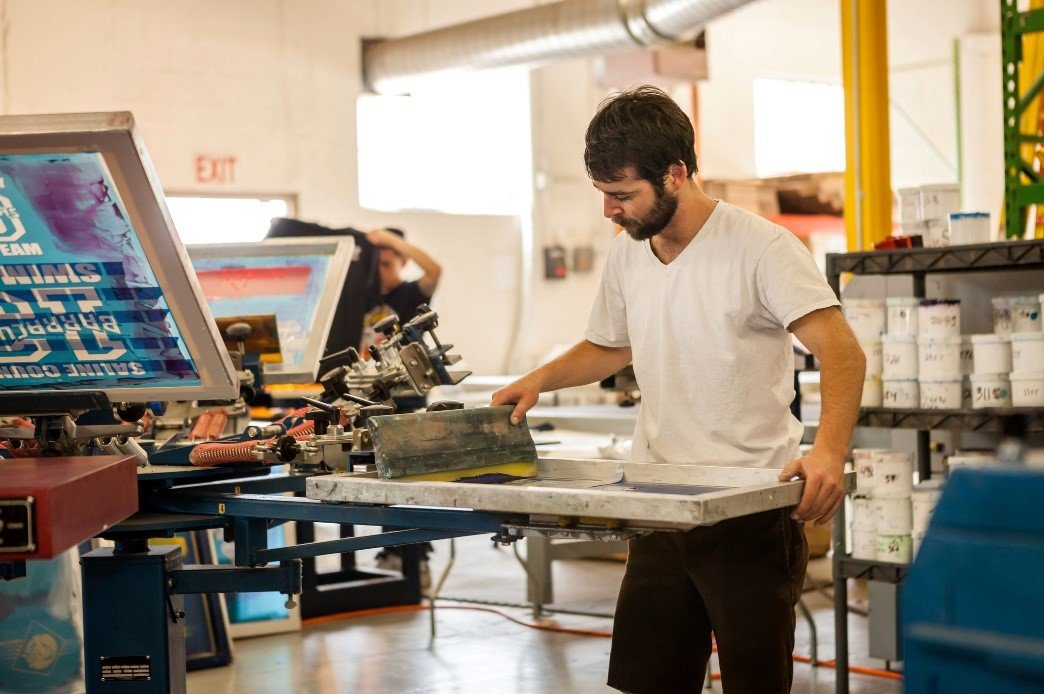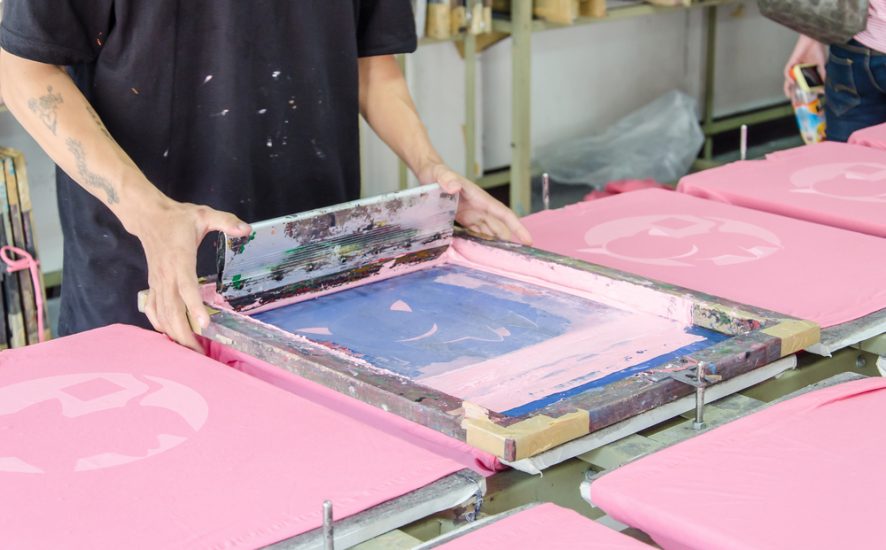The Only Guide to Tx Tees
The Only Guide to Tx Tees
Blog Article
8 Simple Techniques For Tx Tees
Table of ContentsUnknown Facts About Tx TeesThe Main Principles Of Tx Tees Top Guidelines Of Tx Tees7 Easy Facts About Tx Tees ExplainedMore About Tx TeesThe Single Strategy To Use For Tx TeesWhat Does Tx Tees Mean?
That brings your total amount to about $1,900 prior to tax and delivery. Build up other costs, like the variety of utilities it takes to run the store and the expense of ink and emulsion per layout. custom t-shirt design. Take the print below for example. This is a one-color picture, so the cost of ink per t shirt is around 20 cents.The emulsion ought to only be a few cents considering that you 'd just require to layer one display for this work. Usually, printers attempt to make up to 45% earnings on a print job.

With DTF, you can publish a handful of t-shirts, or just one. Make use of the exact same calculator as the section above to compute just how much revenue you 'd use DTF transfers. Contrast the expenses and profits to whichever approach talks best to your arrangement and procedure. Both screen printing and DTF have their niches worldwide.
Tx Tees Can Be Fun For Everyone
The very best way to recognize? Ask about and see what print shops like yours are doing. custom cap printing. Attempt both out and see which you like better
When you're selecting what kind of printing approach to use for printing your artwork styles on your garments, it is necessary that you know the differences between these two methods so you can maximize results while reducing expenses. Screen printing is one of the most frequently made use of strategy for publishing designs on fabrics.
DTG printing is also referred to as spot or direct to garment printing because it prints only what is needed rather than making a screen as display printers do. https://www.slideshare.net/russellcostello79602. Screen printing functions by screen filler squeegee display printing ink screen mesh display, after that transferring the image to garment utilizing heat and/or stress
The DTG printer uses unique dye-sublimation inks that are applied right into a pre-designed image by an electronic printing system. The inks end up being component of the fabric, permitting dynamic shades and outstanding detail. It's additionally known as area or straight to garment printing since it publishes only what is needed as opposed to making a screen as screen printers do.
The 7-Minute Rule for Tx Tees
It's much quicker - you can publish a fullcolor image in minutes, as opposed to hours for screen printing. Second, there's no established up time or expenses involved - you can print any type of design you like, without having to produce a screen first. Third, there's no waste - due to the fact that display printers display print one style each time, they need to screen each color individually.
The paper is extremely costly and can only be utilized when. Once it's printed on, it needs to be disposed of. - The preliminary purchase cost is less than the upfront investment of DTG printers- You can publish multi-color layouts one display each time instead of having to print each shade independently like DTG printing.

Little Known Questions About Tx Tees.
Instead of utilizing display mesh as screen printers do, dye sublimation printers utilize laser modern technology to transfer your pictures onto garments or paper. A warm procedure moves the dye from its solid-state directly right into the gas stage which subsequently fuses it onto material substrates when they are quickly heated up to heats under high stress.
Sublimation printing is environmentally friendly. It utilizes much less water than screenprinting, and due to the fact that it doesn't involve making use of unsafe solvents, it's secure for all kinds of apparel. The dye sublimation inks are likewise unsmelling when healed, unlike screen printers that use hazardous chemicals during the screen printing process that leave behind an undesirable smell.
They likewise conserve cash on expensive devices like direct exposure systems considering that color sublimation printers do not need a UV direct exposure device or a flash treatment stove that is commonly made use of in display printing (custom monograming). What is straight to garment printing (DTG Printing)? DTG printing is an electronic screenprinting procedure that publishes directly onto material using specialized inkjet printers
See This Report on Tx Tees
DTG printing uses several benefits over conventional screenprinting, including the ability to print photographic top quality pictures, greater shade vibrancy, and the capability to publish designs on darker textiles. DTG printers work by heating the fabric ink until it develops into a gas. The gas after that permeates the fabric, bonding with the fibers to develop a permanent print.

Display printers merely prepare their display after that start printing until they run out of item or ink.- There is a variety of experienced display printers throughout the globe, which can be handy for newbies. - It's a slower procedure - screen printers typically have to wait for the ink to completely dry prior to they can print the next shade- Display printers need hands-on labor, so there's a higher understanding contour and it takes longer to create a top notch style- Screen printing isn't as exact as DTG printing, so you might get some "blood loss" of shades from one part of the image onto another if not done correctly.
Rumored Buzz on Tx Tees
Nonetheless, as opposed to making use of screen mesh as display printers do, dye sublimation printers make use of laser technology to move your images onto garments or paper. A warm procedure transfers the color from its solid-state straight into the gas stage which in turn merges it onto textile substrates when they are quickly warmed to heats under high stress.
Sublimation printing is environmentally friendly. It makes use of less water than screenprinting, and since it does not involve the use of unsafe solvents, it's safe for all kinds of garments. The dye sublimation inks are likewise odor-free when healed, unlike screen printers that utilize unsafe chemicals during the screen printing process that leave an undesirable odor.
They also save cash on pricey devices like direct exposure devices considering that dye sublimation printers don't need a UV exposure unit or a flash remedy oven that is commonly utilized in display printing. What is straight to garment printing (DTG Printing)? DTG printing is a digital screenprinting process that prints directly onto material utilizing specialized inkjet printers.
The 5-Minute Rule for Tx Tees
DTG printing uses lots of benefits over conventional screenprinting, including the ability to publish photo high quality pictures, greater shade vibrancy, and the capacity to print designs on darker fabrics. DTG printers function by heating up the textile ink until it transforms right into a gas. The gas then permeates here are the findings the textile, bonding with the fibers to produce a long-term print.
Report this page